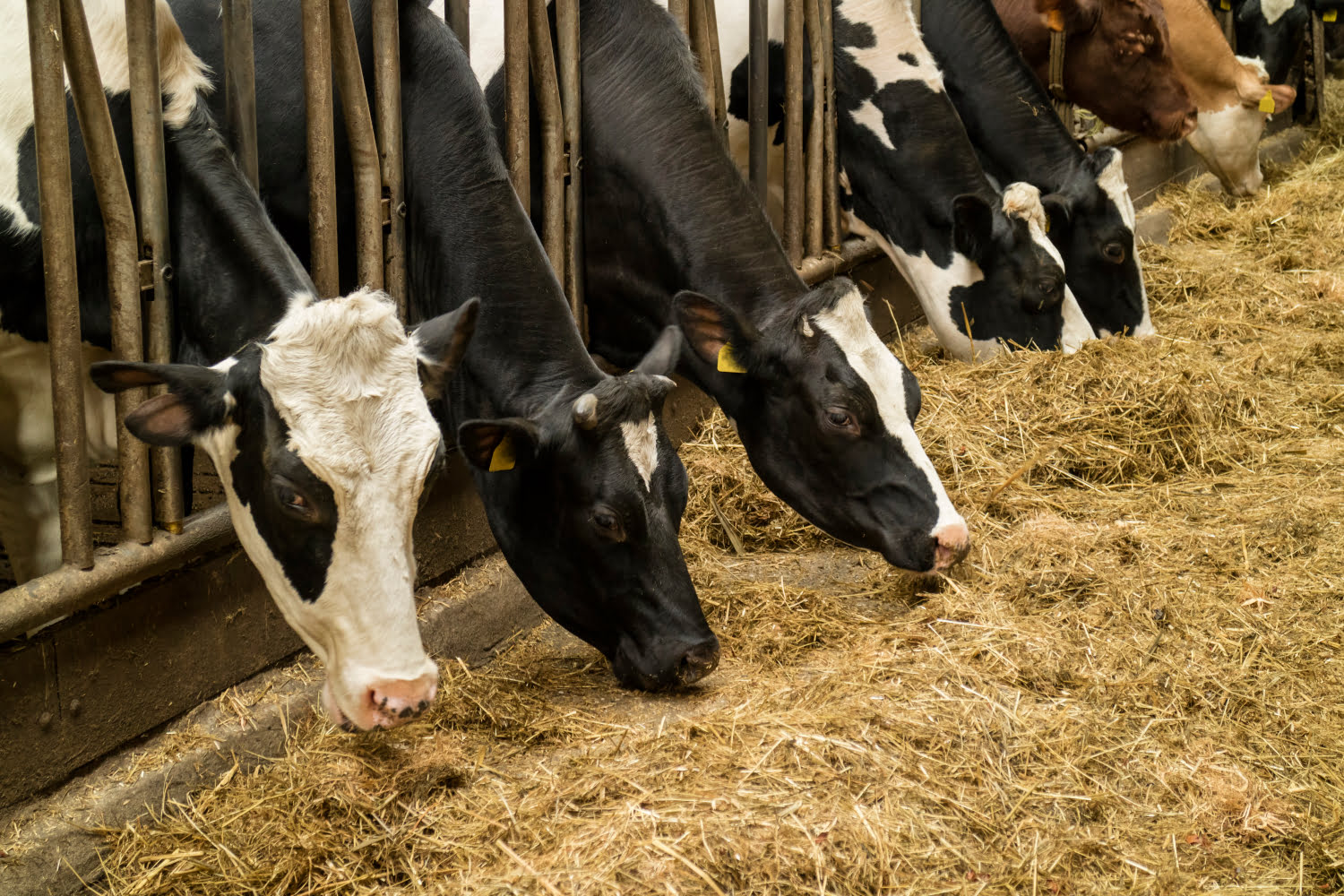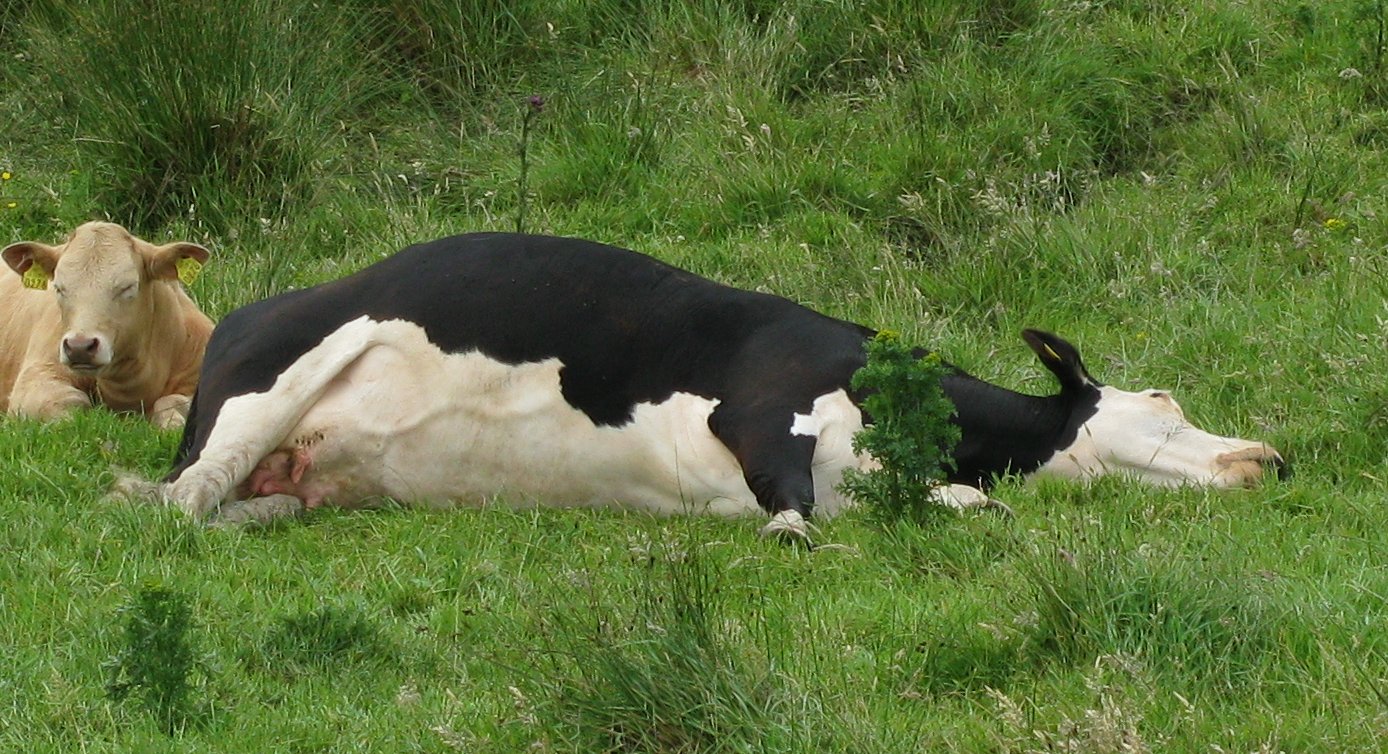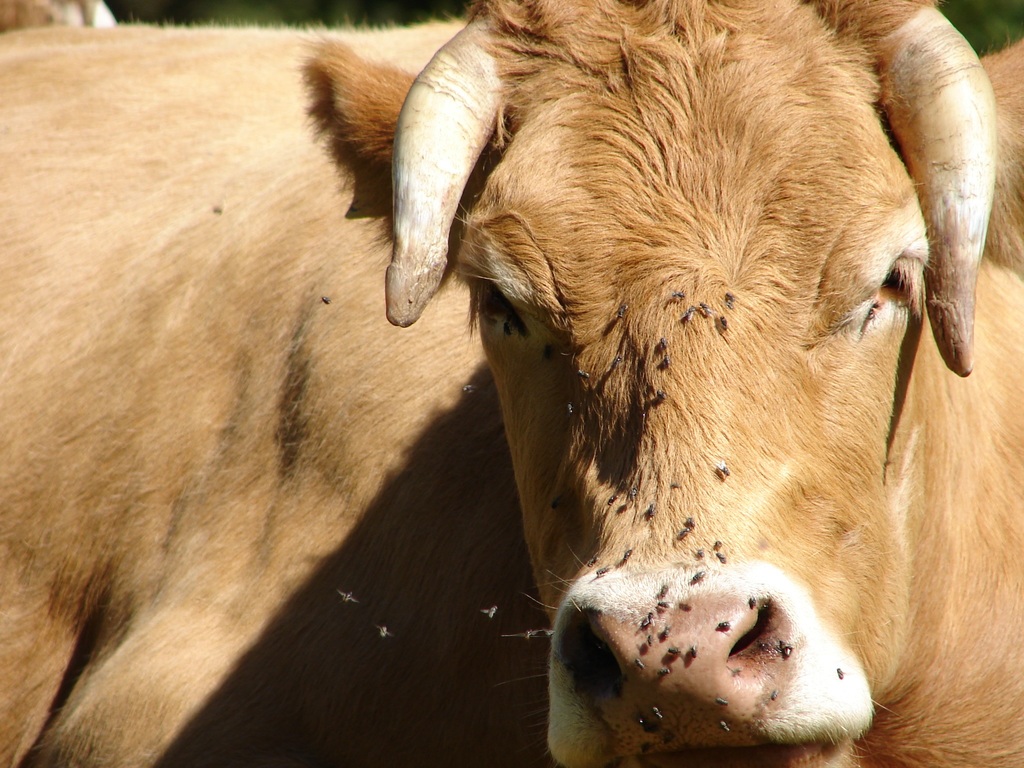Ah, midnight snacks! That bowl of almond-coated chocolates in the dead of the night when it’s just quality time between you and Netflix. Maybe even throw in a bucket of chicken legs…
But, while midnight snacking (that’s why refrigerators have a light inside them!) is commonly linked to sleep disorders, obesity and all sorts of awful conditions in us humans, cows, on the other hand, can benefit greatly from a yummy night snack and other nightly rituals!
In this article, we’ll tell you all about them.

Feed & water at night:
Since cows are ruminants, their intake is much more than other animals, and their digestion process is much faster too.
Besides feeding the appropriate amount of grass during the day, as per their nutritional requirements, a night-feed can be added too, at about 10 pm. Just be sure they don’t overeat!
A tip to improve milk production would be to let them drink enough water after eating.
Drinking water is one of the most basic ways that cows improve their yield of milk. Water should also be made available even at night.
During cold weather, cows can drink warm water to prevent diarrhea. It also helps in the prevention of miscarriage in pregnant cows. And during summer, dairy cows should drink cool water which will help lower their body heat.
Night-time environment:
Since temperatures are cooler at night, you may have to put in some additional effort to make sure your cows are warm and cosy at night.
The optimum temperature for dairy cows is 8 – 25 degrees Celsius. The best temperature for pregnant cows and lactating cows is 6 – 20 degrees Celsius. Night temperature control helps in improving the productivity of dairy cows.
Sounds at night:
Just like how loud sounds disturb babies at night, cows like to keep it relatively quiet too. Sudden noises in the night have been known to affect their milk production.
Driving heavy equipment, car noises or other loud sounds frighten them at night and may lead to a sharp decline in milk quality and quantity.
Night lights:
Cows usually like to sleep with a night light on. You can use white fluorescent lamps to light up your cowsheds at night. This helps improve their metabolism and subsequently improves their milk production.
Bedding:
Soft grass should be used as bedding for dairy cows and the layers should be changed often so that it’s always clean and dry. If cows lie down on wet or hard ground for a long time, it affects their milk production and also causes diseases like mastitis and hoof disease.
Brushing:
Brushing cattle from top to bottom with a brush every night is beneficial to their health.
Brush them carefully from front to back once every night. This helps improve their metabolism, improves blood circulation, keeps body temperature in check and soothes them for a good night’s rest.
Night exercise:
Exercising outdoors or indoors for about an hour at midnight helps improve their fitness levels, feed utilisation, accelerates digestion and increases their appetites. Proper night time exercise doesn’t hinder the rest of the dairy cows but helps increase milk production by 9%.
Night observations:
It’s important to observe your cows at night time. Observing the oestrus of dairy cows is important to not miss the best mating period, which is very important for improving cows' milk production.
Since most dairy cows are estrus at night, they will be more ready to mate. That’s why breeders need to check the estrus symptoms of cows from midnight to daybreak.
Night observations also may give rise to fresh and interesting insights about rest, rumination, excretion and the mental state of dairy cows. This will help in immediate problem-solving.
Night feeding to reduce overnight calving:
Cows are usually monitored less frequently at night. Then, if they do calve at night, it leads to more complications, higher rates of calves deaths and of course, a lack of sleep for the farmers.
Due to the impact of hormones, feeding cows at night reduces the chances of overnight calving.
Because rumen studies have shown that there is a decrease in rumen contractions hours before birthing takes place. When cows are fed at night, about 14 days before calving, the pressures that happen within the rumen rise at night and then decline during the day.

This means that feeding your cows during dinner time means that those cows would probably deliver between 6 am and 6 pm during the day.
So, to sum it up:
- Feeding around 10 pm, as we mentioned earlier, is ideal. The later you feed, the more you will end up pushing back the calving.
- It takes about a week, for your cows to get adjusted to any new change. Night time feeding is no different.
- After the cows have calved, they will need extra nutrition. At that time, you can switch them back to their usual morning feed.
The three positions:
Studies suggest that cows sleep for 4 hours a day and spend about 8 hours a day just chilling. Adult cows also sleep in tiny intervals spread over the entire day.
When a cow is fully awake, her head is away from the ground, lifted and supported by the neck.
Then there's a second position. Where the cow’s head will look as though she is awake but will be completely motionless.

And lastly, the third position, where the cow's head is either resting on the body or the ground. Now she is fully asleep.

The above are the three stages of wakefulness and your cows should be in an environment that’s comfortable enough to transition to these three stages of wakefulness.
To do this, farmers must ensure that stalls are available with a stall size that is big enough for cows to either rest their heads in front or curled into their bodies.
Cows need their beauty sleep. This is when their bodies build immunity.
If cows are sleep deprived it causes a lot of physiological effects like increased metabolic activity, a negative balance of energy, reduced immunity and increased rates of mortality.
Insect Management:
Cattle cleanliness is also an important factor that helps them sleep better. There are a group of arthropods that get attracted to dairy-related factors like manure, feed, moisture, etc. These are mainly house flies, cockroaches, spiders and mosquitoes.

There are a bunch of insect management practices like chemical controls, prompt manure removal, insect traps or using molasses to catch flies and cockroaches etc.
You can also dim the lighting at night or use yellow light which attracts fewer insects compared to white light. And you can ensure that there is no stagnant water in the cow shed which in turn attracts flies and mosquitoes.
Insect management will go a long way in keeping your cows' environments clean and hygienic and making sure that your cows have a good night’s sleep.
Just like how we follow nightly rituals for babies – a hot bath, some milk, a good bedtime story and then a nice comfortable blanket – a lot of good would come out of following similar rituals for cows too that could become a daily practice on your farm.
The right lighting, comfortable bedding, feeding at night time to have more occurrences of daytime calving and keeping their living space hygienic will go a long way in improving their productivity and subsequently, your farm’s profits.
Try it out and tell us in the comments below how it worked out for you. Until next time, good night and sweet dreams!
- The Dedicated Team of Pasture.io, 2021-01-25